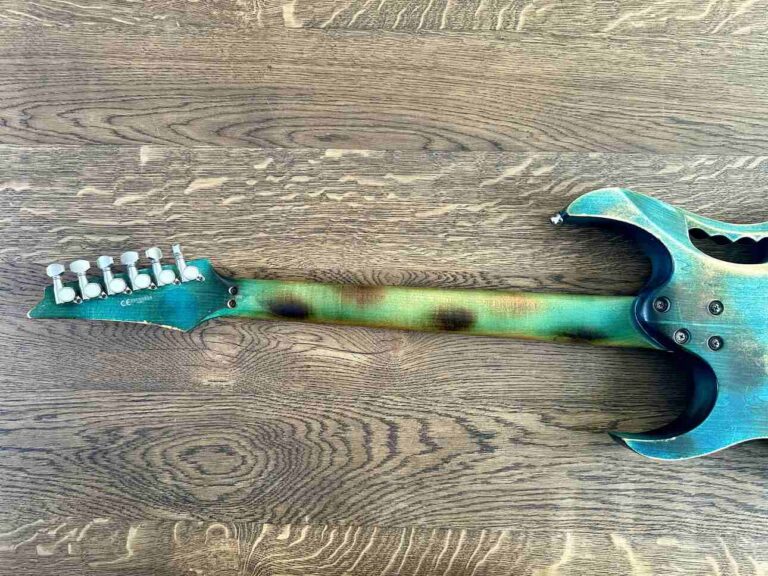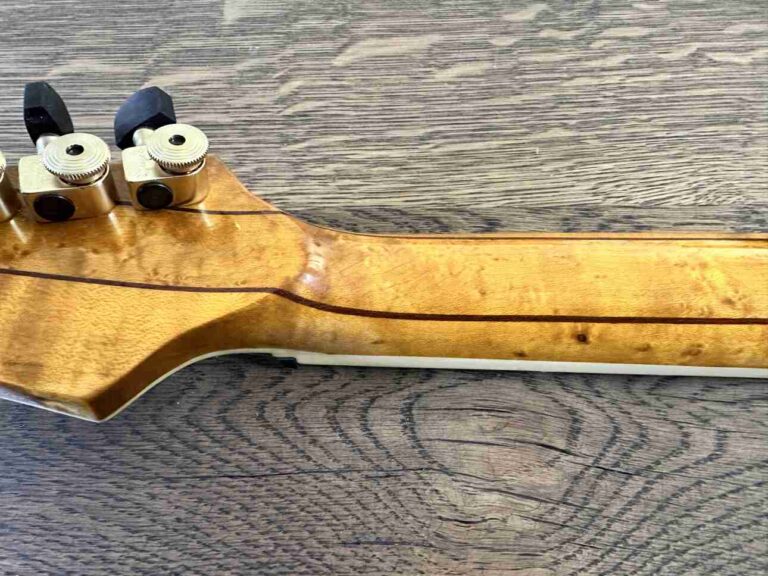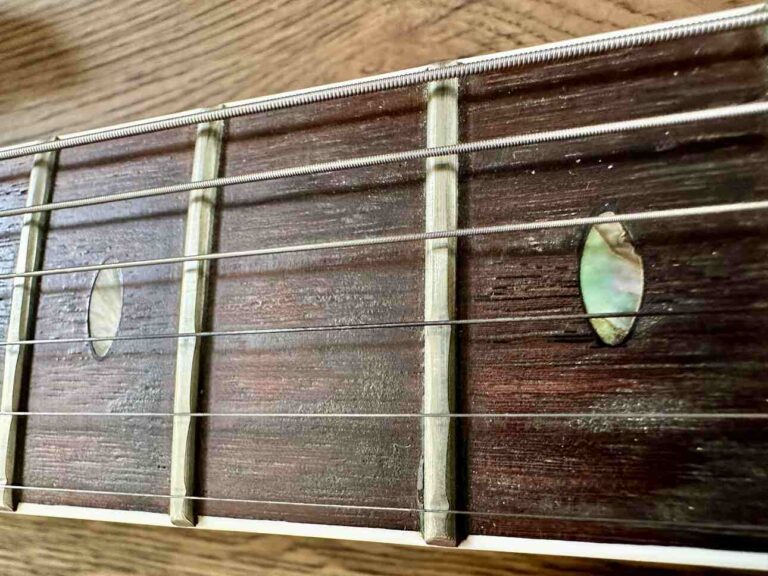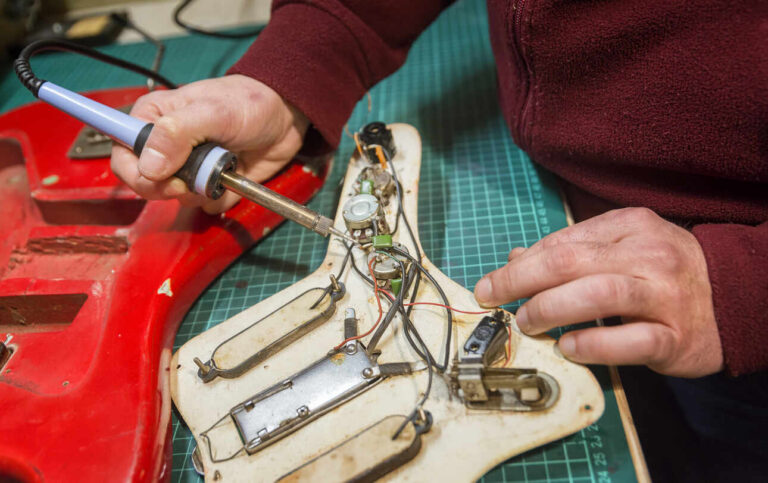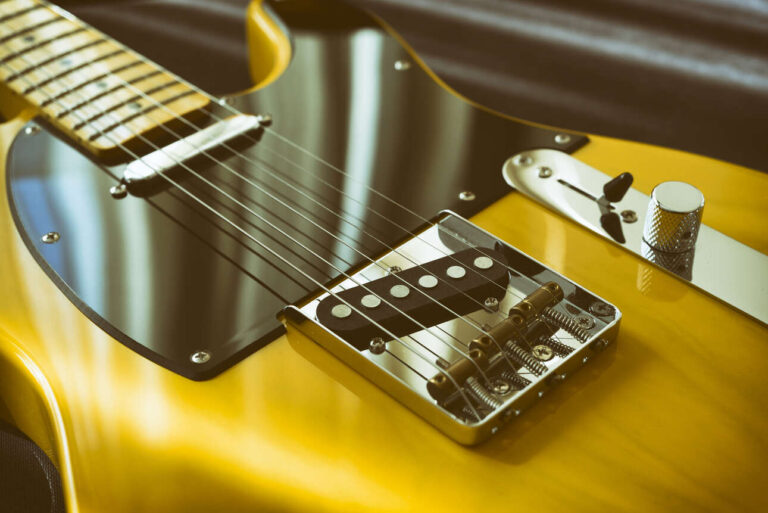Why Are My Electric Guitar Pickups Cutting Out? Tips to Fix it!
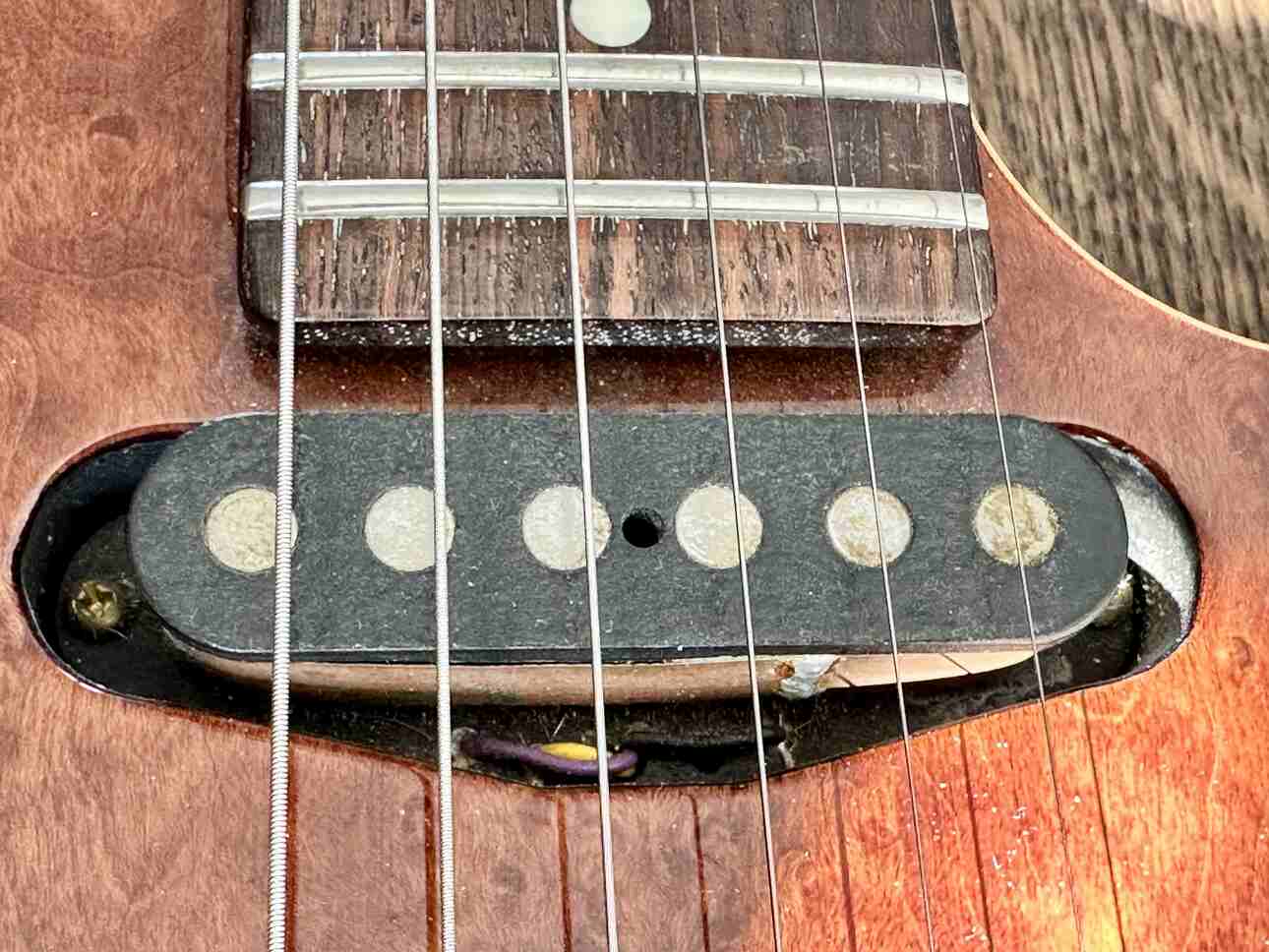
Experiencing your guitar pickups failing can be a real head-scratcher. Let’s dive into why this might happen and how you can get back to jamming without a hitch.
When your pickups cut out, a faulty connection could be the culprit. Another issue might be the controls on your guitar. In this case, you might have a dirty potentiometer, which can cause signal loss. A quick cleanup might bring things back to life.
Other reasons include problems with the pickup selector switch or the guitar output jack. But there are several more, explained in this article.
In short, your pickups might cut out for a few reasons, but with a bit of detective work, you can usually find and fix the issue.
Let’s have a look.
Key Takeaways
- Grasping the fundamentals of how guitar pickups function is critical for pinpointing and fixing problems;
- Pickups often cut out due to loose connections, grime build-up, or troubles with the inner workings like magnets and coils;
- Regular check-ups and fixes for your pickups can keep them in top shape and extend their life.
Common Causes of Pickups Cutting Out
Here’s a quick overview of the issues that could cause a cutout.
Below, I explain them in more detail:
- Faulty wiring and bad connections
- Defective pickup selector switch
- Worn-out output jack
- Pickup magnet issue
- Pickup coil wire issue
- Pickup preamp issue with active pickups
- Pickup battery issue with active pickups
- Volume and tone issue (potentiometers)
- Damaged guitar cable
Faulty Wiring and Bad Connections
Guitar pickups that suddenly stop working can usually be linked to wiring problems or connections that aren’t secure. As guitars age, their parts can degrade, leading to electrical issues that impact your sound.
When your electric guitar’s pickups fail, it’s smart to check the inside wiring for signs of damage or loose wires.
Defective Pickup Selector Switch
The pickup selector switch is often at fault when pickups cut out. This switch lets you switch between your guitar’s pickup options.
A broken switch can cause sound to cut out occasionally or total sound loss when you try to change pickups. If the switch seems to be the issue, swapping it out might prevent this problem from happening again.
Worn-Out Output Jack
A worn-out output jack might be why your guitar pickups are cutting out. The output jack, where your guitar cable goes, can get loose or wear out from lots of use.
Signs that your output jack isn’t working right are a weak signal, crackling noises, and the volume going up and down unexpectedly. Putting in a new output jack is usually an easy and low-cost solution.
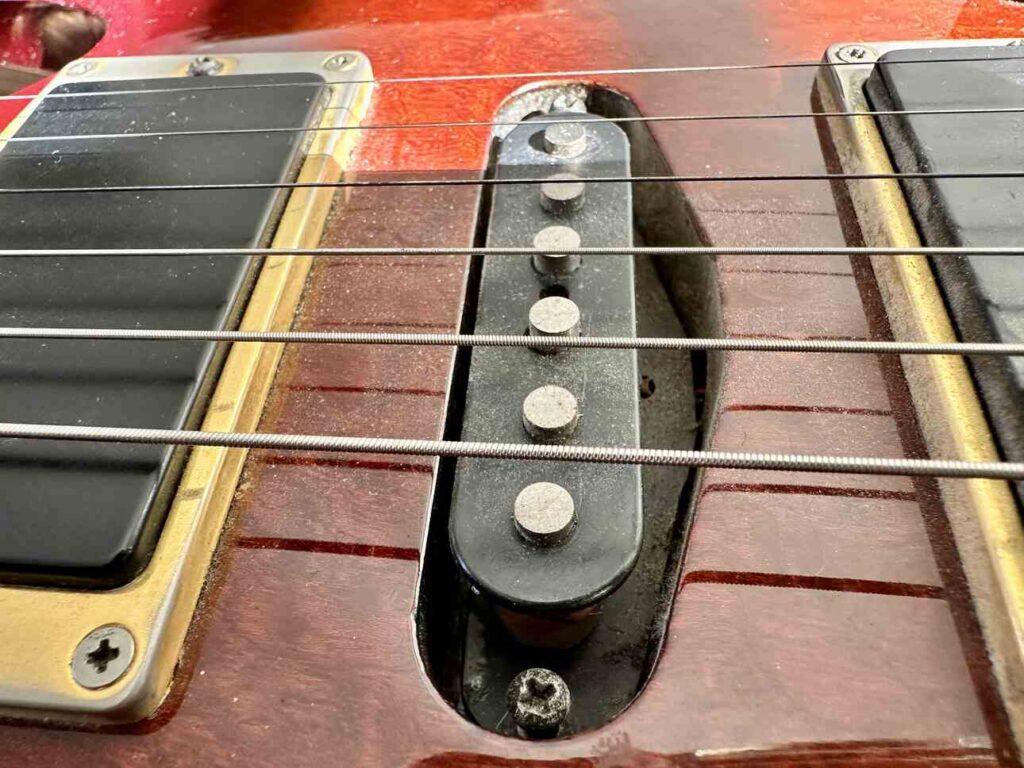
Pickup Magnet Issue
If the magnets have a problem, your sound could cut out.
One possible issue could be that the magnet has become demagnetized. This can happen if exposed to a strong magnetic field – aka electromagnetic interference – or sometimes just because of time. A demagnetized magnet means weaker pickup output or even no sound at all.
Another potential problem could be the magnet’s positioning. If the magnet has shifted or isn’t aligned properly, it won’t pick up the string vibrations correctly. This misalignment can cause your sound to cut out or just sound off.
So, what’s the fix? If the magnet is demagnetized, you might need a new pickup. But if it’s just out of position, you could reposition it yourself or get a pro. Just make sure the magnet’s facing the right way and hasn’t come loose.
Pickup Coil Wire Issue
Now, if your sound is dropping out, there’s a chance there’s a break or short in this wire. Think about it like a garden hose with a kink; the water can’t flow properly. Similarly, if the wire inside your pickup gets damaged, the electrical signal won’t flow smoothly, causing your sound to cut out.
But why would the wire get damaged?
A few reasons: It could be old age, wear and tear from playing, or maybe the pickup took a knock at some point. Soldering points can also fail; if you’ve got active pickups with a battery, a dead battery could be your problem.
To fix this, give your guitar a once-over. Check for any wires (if it appears loose, it’s no good) or solder points. If you’re comfortable with a soldering iron, you can re-solder it yourself. Otherwise, it’s time to visit a guitar tech.
Pickup Preamp Issue with Active Pickups
Active pickups have a built-in preamp powered by a battery. This preamp boosts the signal from your guitar, giving it a hotter output. But if something’s wrong with the preamp, you might notice your sound cutting out.
A common sign of a preamp problem is a sudden signal loss or a significant drop in output volume. If the battery that powers the preamp is dead or dying, your pickups won’t have the juice they need to send a strong signal to your amp.
It’s also possible there’s a fault in the preamp circuit itself. Maybe a component has gone bad, or a connection is loose. This can cause intermittent sound or no sound at all.
What should you do? First, check the battery. If it’s dead, swap it out for a fresh one. The preamp circuit might need professional attention if a new battery doesn’t solve the issue. A guitar tech can diagnose and fix the problem, whether a faulty component or a wiring issue.
Pickup Battery Issue with Active Pickups
Active pickups get their power from a battery. When the battery starts to die, you might notice your sound getting weaker or cutting out completely. It’s like any other battery-powered device; without enough power, it just won’t work properly.
If you’re playing and the sound gets funky or disappears, the first thing to check is the battery. A weak or dead battery won’t provide enough power for the preamp in your pickups, leading to a signal loss.
Replacing the battery is simple. Find the battery compartment, pop out the old one, and put in a fresh one. Make sure it’s seated correctly and that the compartment is closed properly.
Always keep a spare battery in your guitar case to avoid mid-gig surprises. Active pickups can eat through batteries, so regular checks are a good habit.
With a bit of detective work, you can usually find and fix the issue
Volume and Tone Issue (Potentiometers)
If you’re hitting a snag with your guitar’s volume and tone, causing your pickups to cut out, you’re likely dealing with a potentiometer issue.
The potentiometers, or pots, control your guitar’s volume and tone. They can get dirty or wear out with use, leading to scratchy sounds or cutting out when you adjust them. This can be super annoying when you’re trying to play.
Dirt and grime can build up in the pots, which disrupts the electrical signal. This mess can cause crackling or silence when you turn the knobs. If the pots are worn out, they might not work at all.
You can try cleaning the pots with a contact cleaner. This might clear out any gunk that’s messing with the signal. If you’re comfortable with taking part of your guitar apart, you can spray the cleaner into the pot and turn the knob back and forth to work it in.
If cleaning doesn’t help or the pots are too old and worn, they might need replacing. If you’re not confident with a soldering iron, this is a job for a guitar tech.
Damaged Guitar Cable
Finally, broken guitar cables can often lead to your pickups cutting out. Faulty cables might make crackling sounds or cause you to lose your signal entirely.
Look over your guitar cables for any clear damage on the outside, like cuts or bends. Also, plug your guitar to another cable to make sure the issue isn’t just a bad connection.
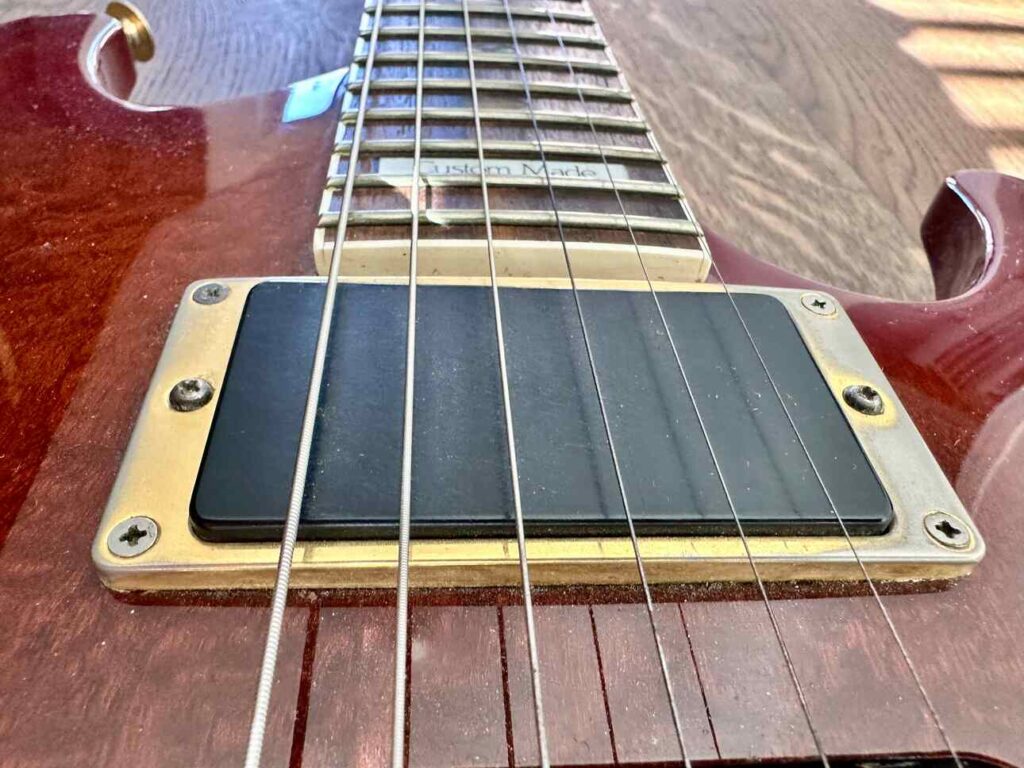
Troubleshooting and Diagnosing Issues
Visual Inspection for Damage
Start by giving your guitar a good look when trying to figure out what’s wrong with it. Check the pickups, wires, and electronics for damage or signs of wear. Don’t forget the pickup selector, as it’s a typical trouble spot.
Here’s what to look for:
- Pickups that are cracked or look damaged;
- Loose connections or wires that are frayed;
- A damaged pickup selector.
Testing the Electronics with a Multimeter
Be sure to use a multimeter to figure out the issue with your guitar’s electronics. This device lets you check the resistance of the pickups, switches, and output jack.
Here’s what to do:
- Switch the multimeter to the resistance (ohms) setting;
- Place the probes on the guitar’s output jack—one on the tip, one on the sleeve;
- Check the resistance for each pickup by using the pickup selector;
- Match your measurements with the standard values from the manufacturer, which you can find on their website or in your guitar’s manual.
If there’s a big gap between your measurements and the expected numbers, this might point to a problem with the pickups or other electronic parts.
Identifying Intermittent Problems
When your guitar pickups keep cutting out now and then, it can be really annoying. You might want to do the ‘wiggle test to discover why this is happening.’ This means you gently shake the parts of your guitar while you’re playing.
Focus on these parts:
- The pickup selector;
- The volume and tone knobs;
- Where you plug in the cable (output jack).
Figure out what’s wrong by paying attention to any changes in the sound as you wiggle these parts. If you’re still having trouble, it might be time to see a guitar tech for help.
Step-by-Step Repair Guide
Soldering Fixes for Wiring Issues
If your guitar pickups are acting up, they might be broken or have insufficient connections. To fix these, you’ll need a soldering iron to know how to use it.
Here’s what to do:
1. Look over the wiring: Check the wiring inside your guitar for any wires that aren’t connected, solder joints that have broken, or wires that are hanging loose;
2. Get the soldering iron: Make sure to put on safety goggles and gloves, plug in your soldering iron, and wait for it to get hot;
3. Fix any disconnected wires: If you spot wires that aren’t connected as they should be, put a bit of solder on the wire end and the place where it should connect. Then, heat both with the soldering iron until the solder melts and sticks to both, making a solid connection;
4. Secure loose connections: If you find a connection that’s not tight, dab a bit of solder onto the spot, then heat the solder and the joint with the soldering iron until the solder melts and covers the connection well, making it secure.
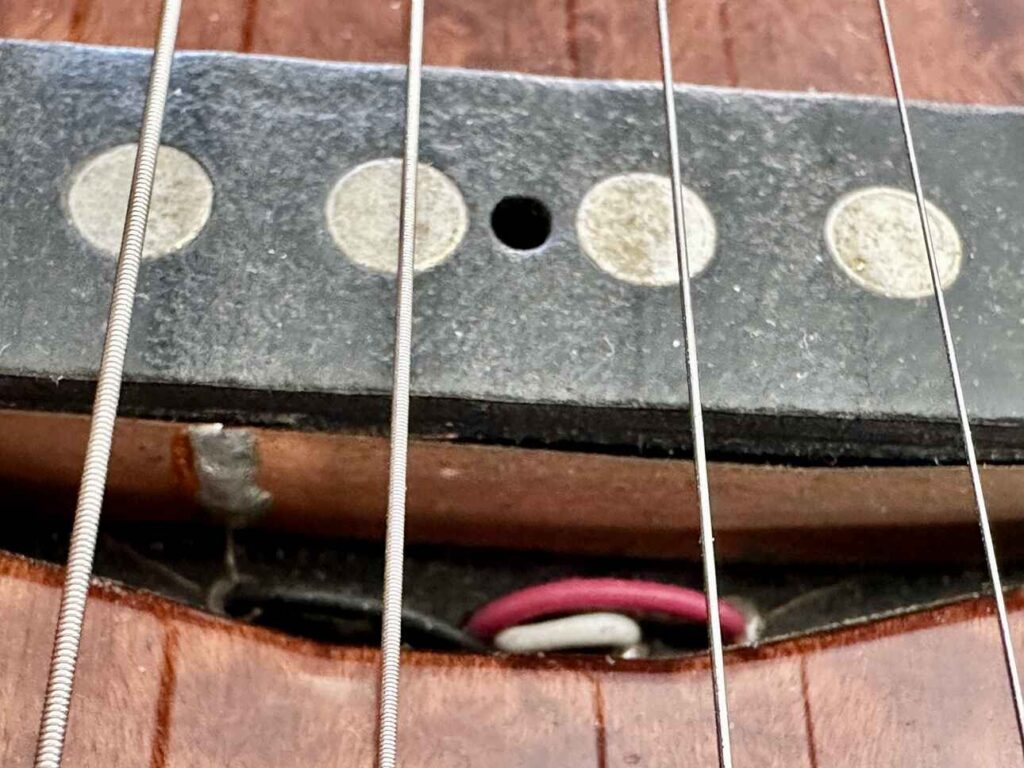
Replacing the Pickup Selector
When your guitar has a problem with the pickup selector, here’s how to put in a new one:
1. Take out the old selector: Take the screws out of the old pickup selector and gently detach the wires;
2. Set up the new selector: Attach the wires to the new selector using your guitar’s wiring diagram as a guide;
3. Put the new selector in place: Fasten the new selector with screws, then check to see if it’s working by switching between the pickups.
Servicing the Output Jack
If the output jack on your guitar is not tight or the connection isn’t great, here’s what you can do to fix it:
1. Take off the jack plate: Unscrew it so you can get to the output jack and its wires;
2. Check for loose connections: See if any wires are not connected or are loose. Solder them if needed to make sure they’re tight;
3. Clean the contacts: Use contact cleaner and a soft cloth to wipe the contacts on the output jack;
4. Put it back together: After the contacts are clean and the wires are tight, screw the jack plate back onto the guitar.
Maintaining Your Guitar Pickups
Regular Cleaning and Care
Regular cleaning is key to maintaining your guitar pickups.
Begin by softly wiping the pickups with a soft, dry cloth to remove dust, dirt, or sweat. For tougher grime, use a cloth that’s a bit damp with a gentle cleaner.
Make sure to dry the pickups completely after cleaning to avoid problems with moisture.
Looking after your guitar can help with the pickups, too. Clean the fretboard often, polish the guitar’s body, and look for loose or broken parts.
Preventive Measures to Avoid Future Problems
Taking steps to prevent issues can save you from guitar pickup troubles down the line:
- Check wiring connections: Wires that are loose or broken can cause pickups to fail;
- Store your guitar safely: Put your guitar in a case or on a stand, and keep it away from too much heat, cold, or dampness;
- Don’t play too hard, and try not to use metal picks: They can harm your pickups. Play gently and use picks that aren’t made of metal to prevent problems.
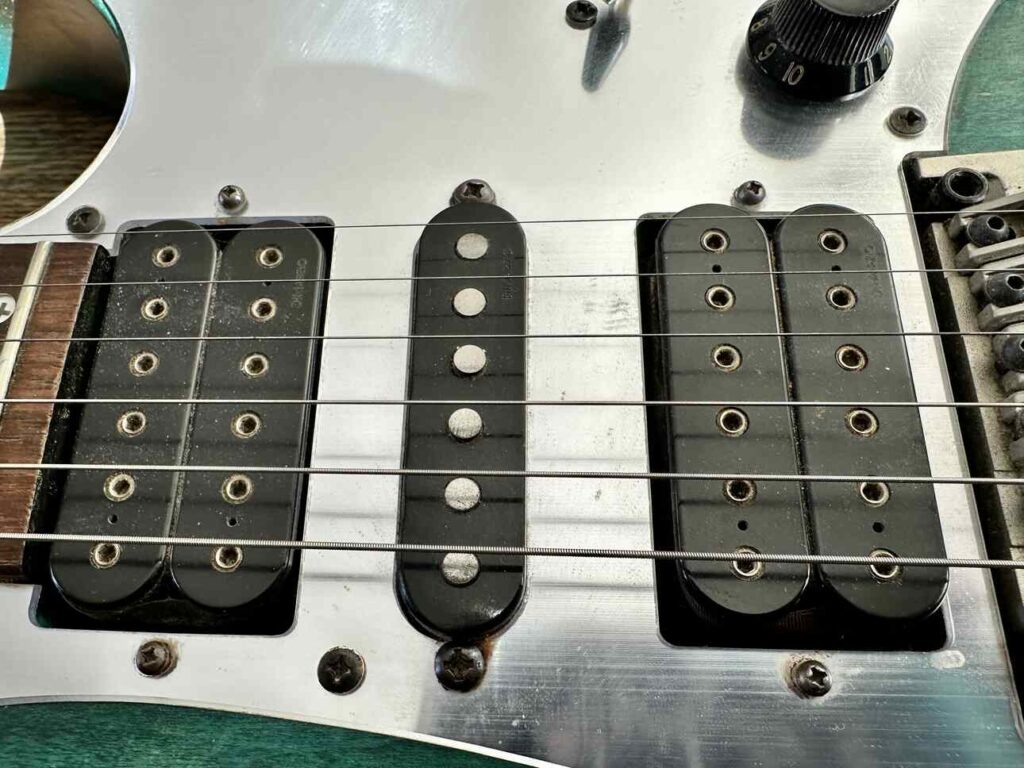
When to Seek Professional Help
Evaluating the Severity of Pickup Issues
When you run into problems with your guitar pickups, figuring out how serious they are is key.
Some typical signs of pickup trouble are buzzing, humming, or a sound that’s not steady. Here’s a list to help you figure out what these symptoms might mean:
- Minor problems: If you sometimes have a sound that cuts in and out, you could have a loose connection or a pickup that’s not quite in the right spot;
- Medium problems: If there’s a constant buzz or the sound isn’t strong, you might have an issue with the electrical parts or wiring. You may need to change how high the pickups are set;
- Severe problems: If your pickups stop working completely or don’t make any sound, it’s time to get help from someone who knows a lot about guitars.
Benefits of Professional Repair Services
Sometimes, it’s best to get help from a pro for guitar pickup problems, even if you can do some fixes yourself. Here are the good things about going to a professional:
- They know their stuff: Pros know how to figure out, find, and fix different pickup problems. They can quickly get to the bottom of the issue and know the best way to deal with it;
- They’re precise: Pros have special tools and equipment, which means they can diagnose and repair your guitar pickups the right way;
- Your pickups will last longer: Getting a professional to look at your guitar can make the pickups last longer and keep them sounding great;
- Peace of mind: When you let the experts handle the repairs, you can relax knowing your guitar is in good hands. This lets you focus on your music or just enjoy playing your guitar.
Tips for Improving Guitar Pickup Performance
Upgrading Your Pickups
Boosting your guitar’s sound can be as simple as upgrading the pickups. Top-quality pickups usually offer clearer sound and more consistent performance. When picking new pickups, think about the music you play and the sound you want.
Pickups are made for all kinds of music and ways of playing, so take your time to look into different kinds and try them out.
Still, before you upgrade your pickups, talk to a guitar tech or luthier. They can give you helpful advice and point you to the best choices for your guitar. You might consult The Guitar Pickup Handbook: The Start of Your Sound for ideas.
Enhancing Connection Quality
The quality of the connections between your guitar’s pickups, the pots (knobs), and the output jack is crucial for your pickups to work their best. Here are some ways to make sure these connections are good:
- Clean the pots: Dirt and dust can build up in your guitar pots over time, making them work poorly. Use contact cleaner to clean the pots well and get rid of any dirt;
- Check the wiring: Check the wiring inside your guitar for any loose or unconnected cables. You can use a soldering iron to fix loose connections or put in new cables. If soldering isn’t your thing, you might want to get help from a pro;
- Check the output jack: The output jack can also be a problem. It can affect how your pickups work if they are loose or the contact points are dirty. Make sure any loose parts are tight and clean off any dirt with contact cleaner.
Selecting the Right Tools for Pickup Repair
Essential Tools for Home Repairs
Every guitar player should have these key tools ready to go:
- Screwdrivers: You’ll want different sizes of both flathead and Phillips screwdrivers for adjusting and swapping out pickups;
- Soldering iron: It’s a must-have for any wiring fixes and to reconnect wires that have come loose;
- Digital multimeter: This tool checks the resistance and voltage in your guitar’s electronics, which can help you find electrical issues;
- Wire cutter and stripper: You’ll need these to cut and peel back the insulation on wires, which is handy when you’re working on your pickups;
- Needle-nose pliers: Great for holding onto and bending tiny wires inside your guitar.
Advanced Tools for In-Depth Work
For guitar repair enthusiasts who want to get really involved with their instrument’s details, these advanced tools are worth considering:
- Oscilloscope: With this, you can look at the electrical signals in detail to see exactly how your pickups are doing and find any problems;
- Winding machine: If you’re into making or fixing your own pickups, this device winds the wire around the pickup coil for you;
- Vacuum pickup re-magnetizer: This can restore your pickups’ magnetism, which can help restore their sound if they’ve lost some of their magnetic pull over time.
Additional Resources and Information
Guitar Repair Books and Manuals
Books can be a great way to learn guitar repair techniques on your own time. Here are a few good ones:
- “The Unorthodox Guitar”: This book gives you a look into different ways to play and handle your guitar;
- “Guitar All-in-One for Dummies”: This book is packed with information on all sorts of guitar-related topics, including how to take care of and fix your guitar;
- “The Cut the Crap! Guide to the Guitar”: A solid choice for getting down to guitar upkeep and repair basics.
Online Tutorials and YouTube Channels
Online tutorials and YouTube channels can be super helpful for learning about guitar repair, with videos that show you exactly how it’s done. Here are a couple of YouTube channels worth checking out:
- StewMac: They’ve got lots of videos on how to use tools, repair tips, and reviews of products. StewMac is well-known in the guitar repair scene;
- Crimson Guitars: This channel has a ton of tutorials on fixing and building guitars, which is great for anyone wanting to learn more;
- Dave’s World of Fun Stuff: Dave takes a laid-back approach to guitar repair, with easy-to-follow guides and clear explanations that help simplify complex repairs.
Frequently Asked Questions
What might cause intermittent sound from electric guitar pickups?
Intermittent sound can be caused by several issues. Loose wiring, bad connections, or dirty contacts in the output jack or internal components can affect the sound. Worn-out pots or switches might also be the problem.
How can I tell if my guitar pickups have wiring issues?
Open your guitar’s control cavity or pickguard to check for wiring issues. Look for damaged or loose wires. A multimeter can help you find problems by measuring the continuity and resistance.
Could a bad soldering job be responsible for my pickups malfunctioning?
Absolutely, bad soldering can cause pickups to act up. Weak or missing signals can also result from bad solder joints. If you think the soldering is the issue, inspect all solder points when the guitar is off and unplugged. Then, fix any bad joints with a new solder for a solid connection.
What are the signs that my guitar’s electronics need maintenance?
If you get intermittent sound, signal loss, noise, or unresponsive controls, it’s time for maintenance. When you adjust the volume or tone controls, buzzing, humming, or crackling means you might need to clean or parts may need to be replaced permanently.
How do environmental factors affect the performance of guitar pickups?
Things like temperature, humidity, and dust can mess with your pickups. Humidity can cause corrosion, and temperature changes can affect wires and solder. Dust can interfere with signal transmission. Clean your guitar often, keep it in a stable environment, and use a case to protect it.
Are there common troubleshooting steps for a quiet or silent guitar pickup?
- First, check the cable and output jack for a quiet or silent pickup for damage.
- Try a different cable or guitar to see if the issue is with the guitar;
- Look at the pickup’s distance from the strings and adjust if needed. Check the electronics for damage;
- If these steps don’t fix it, a guitar tech might need to take a look.

